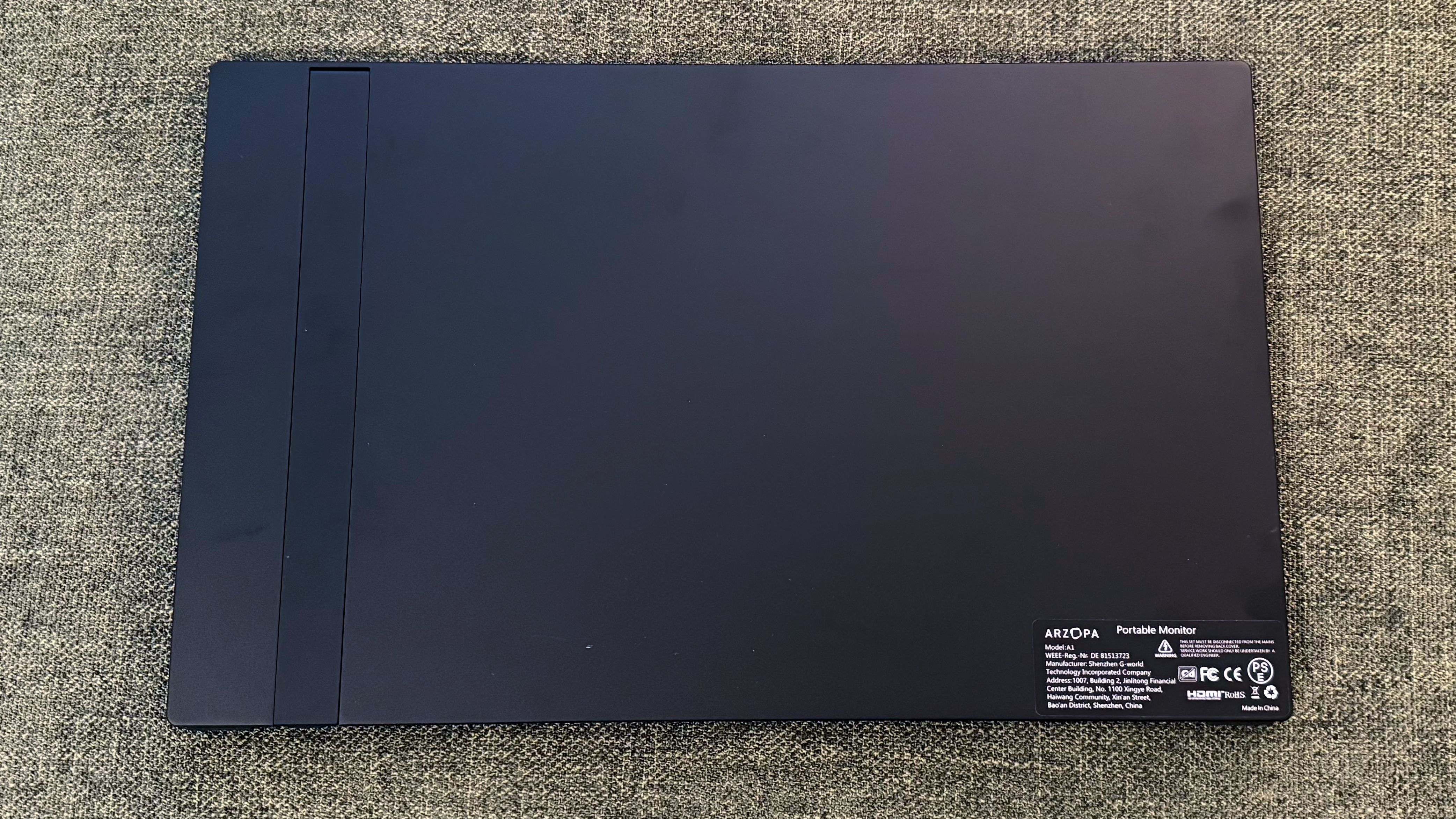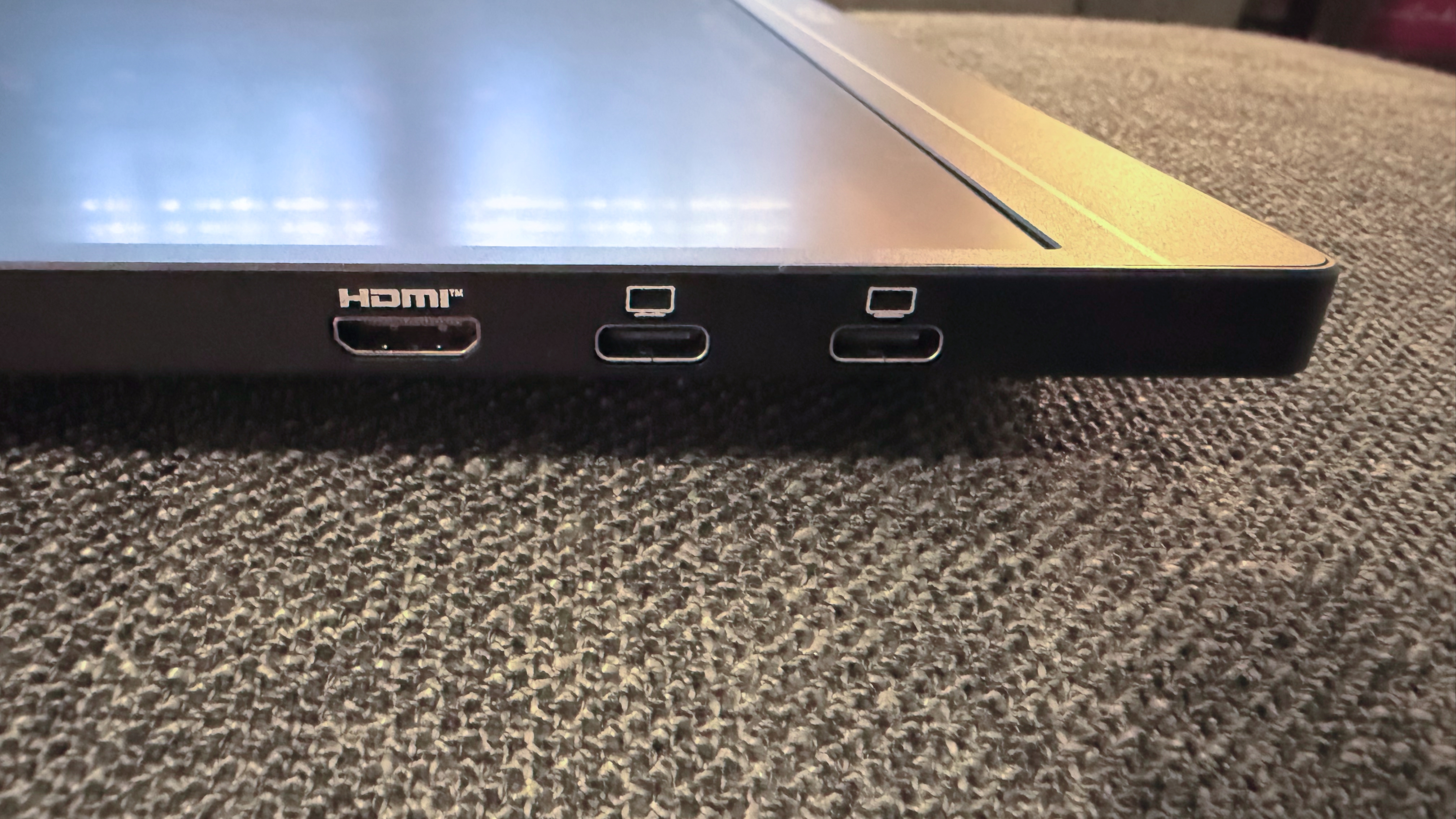How low can they go? When it comes to the best portable monitorsmultiple manufacturers seem to be testing the lower limits of what’s possible regarding pricing. Arzopa is one such company. We’ve already reviewed its G1 Game portable monitorwhich offers a 15.6-inch 1080p panel with a 144Hz refresh rate. Now, we’re looking at the A1, the company’s entry-level portable monitor.
The monitor is $75 on Amazon, but it was available for as low as $63 on Black Friday. But don’t let the low price fool you. Arzopa has added some nice touches to this portable monitor, making it an excellent bargain for anyone seeking a secondary monitor for travel use.
Design of the Arzopa S1 Portable Monitor
The S1 sets itself apart from similar entries in this price segment due to its choice of materials for the chassis. While most value-priced portable monitors use a plastic chassis to keep costs down, the S1 uses an aluminum frame instead. This imparts a sense of quality you can’t get from cheap, thin plastic that flexes easily. The chassis is rigid and finished in matte black.
Thin bezels run along the sides and top, while a more significant “chin” resides below the 15.6-inch panel, which features Arzopa branding. We love to see integrated kickstands on portable monitors, and Arzopa includes one on the S1. It’s a long, rectangular kickstand that is top-hinged. The stiff hinge lets you configure the monitor to your ideal angle for the best viewing experience.
The S1 features three ports on its left side: two USB-C (DisplayPort Alt-Mode supported) and an HDMI port. Arzopa also includes USB-C to USB-C, USB-C to USB-A (for auxiliary power), and HDMI to Mini-HDMI cables in the box. There are three buttons located at the top left of the S1. There’s a multi-function power/input switch/return button, a rocker switch (which navigates the OSD or controls brightness/volume), and an OSD button.
Arzopa A1 Portable Monitor Specifications
| Panel Type / Backlight | IPS / WLED |
| Screen Size / Aspect Ratio | 15.6 inches / 16:9 |
| Max Resolution & Refresh Rate | 1920 x 1080 @ 60Hz |
| Color Depth | 8-bit |
| Max Brightness | 300 nits |
| Contrast | 1,200:1 |
| Ports | 1x Mini-HDMI, 2x DisplayPort (USB-C Alt Mode) |
| Speakers | 2 x 1-watt |
| Dimensions | 15 x 9.5x 0.36 inches |
| Weight | 1.6 pounds |
On-Screen Display for the Arzopa A1 Portable Monitor
The OSD is simple and includes basic controls for the A1. There are controls for brightness, contrast, color temperature, Eco modes, low blue light mode, HDR mode, and input switching.
Pressing the bottom button brings up the OSD while pressing the rocker switch up or down navigates through the menu system. Another press of the OSD button dives deeper into the menu systems and activates an option, while the top button backs out of menus (and out of the entire OSD if you’re on the main screen).
When you’re not already in the OSD, the top button switches the input on the monitor (USB-C 1, USB-C 2, HDMI). The rocker switch has an interesting dual-mode usage when not in the OSD. If you first press up, it brings up the brightness controls. Then subsequent presses up and down raise and lower the brightness. If you first press down on the rocker switch, it calls up the volume controls. Once invoked, pressing up increases the volume, and pressing down lowers the volume.
Image Quality and Performance of the Arzopa A1 Portable Monitor
The most popular size and resolution in the portable monitor space is 15.6 inches and Full HD (1920 x 1080). Not surprisingly, this is how Arzopa specs the A1, including a 60Hz panel refresh rate compared to 144Hz for the more gaming-oriented G1. According to the manufacturer’s specifications, the A1’s IPS panel has a contrast ratio of 1,200:1 and a maximum brightness of 300 nits. However, it didn’t take long to discover that the panel is the limiting factor with the A1, and probably why it’s available for so cheap.
The panel covered 66.4 percent of sRGB and just 47.1 percent of DCI-P3 in our instrumented tests. It outpaced the $200 Plugable USBC-PDMON in the former but lagged it in the latter test. In other words, you won’t be using this monitor for color-critical applications. Maximum brightness was also a bit disappointing, coming in at 228 nits. That’s not the lowest we’ve recorded in this segment (the Lepow C2 could only muster 148 nits), but it’s below average.

In my well-lit home office, the display was adequately bright for typical work-duty tasks such as typing up this review in Microsoft Word, editing a spreadsheet in Excel, or manipulating images in my photo editor. However, while watching an episode of Star Wars: Skeleton Crew on the monitor, I sometimes struggled to make out objects and character features in darker scenes.
There was also a slight drop-off in brightness and color when content was viewed off-center. Keep this in mind if you’re not planning to use the A1 directly in front of you, i.e., placing it beside your laptop’s main display.
Audio on the Arzopa A1 Portable Monitor
I was pleasantly surprised by the audio from the two 1-watt speakers on the A1. Even when set to 50 percent volume, they filled my home office, while cranking them to 100 percent allowed the sound to travel to the other side of my house with surprising clarity.
The speakers don’t have thumping bass, but they’re perfectly fine for listening to music or watching movies in a pinch. I’d even go so far as to say that they’re better than many laptop speakers that I’ve recently tested. Given the budget pricing of the A1, I’d consider the speakers an excellent value add-in.
Bottom Line
The Arzopa A1 is an intriguing entry into the crowded portable monitor space. While we’ve seen value-priced entries before, the A1 is particularly noteworthy, with a price tag below $80. In recent weeks, it’s fallen to as low as $63.
With a price tag this low, you can’t have everything. In the case of the A1, off-axis viewing resulted in slightly lower brightness and washed-out colors (more than other portable monitors that I’ve tested). This shouldn’t be a problem if you have the monitor directly in front of you, but it could be more prominent if you’re attempting to use it in a multi-monitor setup. You also wouldn’t want to use the A1 for color-critical work, although that’s understandable given the price point.
However, the A1 compensates for these deficiencies with a sturdy kickstand for choosing your optimal viewing angle. The speakers are excellent for a portable monitor (at any price point). Add to this the excellent build quality, thanks to the aluminum chassis, and the A1 is definitely worthy of your consideration.













